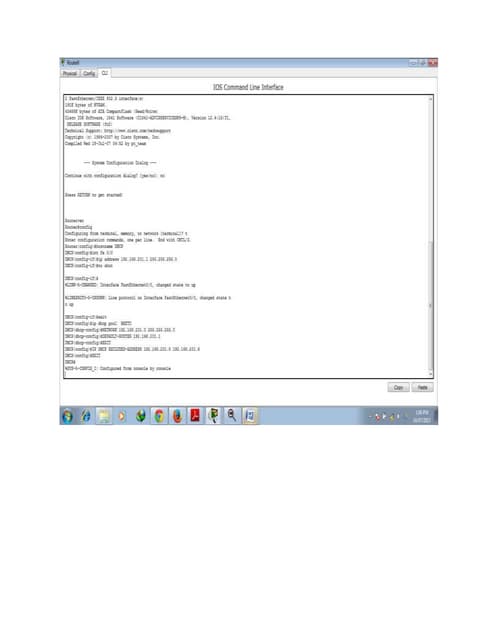

The last step is to configure the options that DHCP will pass to the network devices. Test by connecting PCs to each VLAN and verify that they are receiving proper IP address configuration. Now we're ready to create the DHCP pools: My preference is to exclude the first 10 IP addresses and the last in each network. The first step is to exclude IP addresses that will be statically configured for network devices and servers. There will be one DHCP server created for each VLAN. Where ever the interVLAN routing is configured, that's where the DHCP servers will be configured. Where you configure your DHCP server depends on the interVLAN routing method chosen: Layer 3 switch or Router on a Stick. The instructions are identical for either a router or a switch. This page details the configuration of a DHCP server on a switch or a router. The DHCP server can be located on a server, router or a switch. It allocates IP addresses and options to the devices on the network. For an explanation of codes 150 and 66 see the first chapter.CME - Creating a DHCP Server - TelecomWorld 101Īn important part of the network is the DHCP server. We will connect to Mikrotik and use the terminal or you can follow the command in GUI. So the final value for Mikrotik configuration is 0xC0A84196. We also need to add the 0x at the start, which will say to Mikrotik that the value is in hexadecimal format. Convert decimal values to hexadecimal and then put it all together. Ok for example let’s have the IP of TFPT server 192.168.65.150 Ok, now we have all the required knowledge lets go to config. The IP address should be in the hex format so we need to convert our IP to hex. Option 66 is an open standard juniper that supports it. Like option 150, option 66 is used to specify the Name of the TFTP server. The IEEE standard that matches this requirement is Option 66. The format of the option is:Ĭode Len IPv4 Configuration Server Address(es)ĭHCP Option 150 is Cisco proprietary. The part that we are interested in is the format of this option. The pushing TFTP server value with the DHCP server is described in RFC 5859. Here I will show you how to set this value in the Mikrotik DHCP server. The VoIP phone use the TFTP server to download configuration files. Sometimes you need to push the TFTP server value as part of the DHCP process, for example, this is used in most VoIP systems.


 0 kommentar(er)
0 kommentar(er)
